Last Updated on January 9, 2025 by Kittredge Cherry
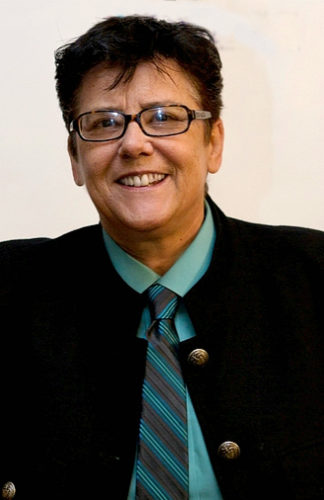 Jeanne Cordova was a pioneering lesbian feminist activist and ex-nun who shook the world by revealing lesbian life in the convent. She died on Jan. 10, 2016 at age 67.
Jeanne Cordova was a pioneering lesbian feminist activist and ex-nun who shook the world by revealing lesbian life in the convent. She died on Jan. 10, 2016 at age 67.
Cordova told her story as contributor to the groundbreaking 1985 book “Lesbian Nuns: Breaking Silence” and author of two memoirs “Kicking the Habit” and “When We Were Outlaws.”
“Lesbian Nuns: Breaking Silence” remains the definitive work on this hidden and forbidden subject more than 30 years after it was first published. It is also one of the best-selling lesbian books of all time.
 Many others have written about Cordova’s accomplishments as an activist, writer and publisher. But Cordova’s radical revelations about lesbian nuns are often omitted or downplayed in online obituaries and tributes.
Many others have written about Cordova’s accomplishments as an activist, writer and publisher. But Cordova’s radical revelations about lesbian nuns are often omitted or downplayed in online obituaries and tributes.
[Update on June 6, 2024: is celebrated on June 6, 2024, in a Google Doodle, one of the most-viewed items on the Internet. The day-long alteration to the logo on Google’s home page honors Cordova’s achievements — without mentioning her religious roots.]
This article aims to provide balance by focusing on Cordova’s experiences with the church: growing up Catholic, discovering her lesbian identity in the convent, and telling the world about lesbian nuns. Cordova left the convent far behind and transferred her devotion to the lesbian community, but her early religious experiences helped shape her into the effective activist that she became.
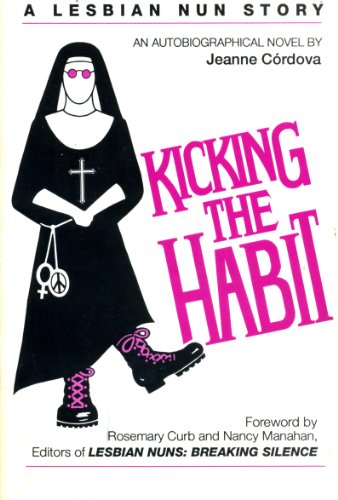 Both the church and the secular LGBTQ community may prefer to forget the uncomfortable truth: Same-sex love exists in the church, and the church trained some leaders of the LGBTQ rights movement.
Both the church and the secular LGBTQ community may prefer to forget the uncomfortable truth: Same-sex love exists in the church, and the church trained some leaders of the LGBTQ rights movement.
“The movements for social justice in the ‘70s and ‘80s are replete with ex-nun lesbian leadership,” Cordova told the Los Angeles Times in an article on May 1, 1985. “I have come to see the convent as a boot camp for us all.”
For example, the 50 contributors to “Lesbian Nuns” include two former directors of the National Gay and Lesbian Task Force, Virginia Apuzzo and Jean O‘Leary.
Early years
Cordova was born July 18, 1948 in Bremerhaven, Germany to a devout conservative Roman Catholic family. She was the second of 12 children. Her mother, Joan McGuinnes Cordova, was a convent-raised Irish Catholic from New York and her father, Frederick Cordova, was a Mexican American businessman and West Point graduate.
In the 1950s her family moved to the Republican suburbs of southern California, where Cordova grew up attending Catholic schools. Her role models were nuns and she dreamed of becoming a nun from the age of 7.
Cordova was attracted to convent life for the same reason that drew many queer people to become nuns, monks and priests since medieval times. It provided an alternative to heterosexual marriage.
“I chose the convent because I knew I wasn’t interested in the world of men and women, marriage, children—’that’ lifestyle. Being in the service of God within a community of women felt natural and right. I’m sure the fact that I fell in love with God at the age of seven and made a vow to dedicate my life to Him was much informed by my strong Catholic parents’ (one Irish woman and one Mexican dude) teachings, as well as my latent lesbianism,” she told the Windy City Times.
Life as a nun
In 1966 Cordova graduated from high school and entered the Sisters of the Immaculate Heart of Mary (IHM) convent in Santa Barbara, California. She was a naïve 18-year-old nun whose spiritual and sexual development was about to be speeded up to hyper-drive by Vatican II.
“I arrived on Entrance Day wearing my James Dean wraparound sunglasses, sincerely believing that the warriorship of my patron saint (butch dyke Jeanne d’Arc) was spiritually motivated. I left the holy sisterhood one year later thoroughly edified by the carnal motivations and wraparound body of novice Sister Marie Immaculata. My boot camp in the sisterhood of the Immaculate Heart of Mary (detailed in my autobiographical novel, Kicking the Habit) did clarify my lesbianism,” she wrote in an excerpt from her essay in the anthology “The Persistent Desire: A Femme-Butch Reader.”
As soon as she arrived, Cordova was confronted by stunning reforms from the Second Vatican Council (1962-65) in an effort to modernize the Catholic church. She described it as “a crash course in reality” in her 1988 oral history interview in the digital repository of California State University at Long Beach.
“The day after I got in, they got rid of the habit, they got rid of the Latin, they changed the Mass, we were supposed to drop our nun names and use our regular names full out to the world,” she said.
She described the shock in an excerpt from “Lesbian Nuns” quoted in “Libido Dominandi: Sexual Liberation and Political Control” by E. Michael Jones. The book explores how the rhetoric of sexual freedom can lead to political and social control. Cordova wrote:
“They promised me monastic robes, glorious Latin liturgy, the protection of the three sacred vows, the peace of saints in a quiet cell, the sisterhood of a holy family. But I entered religious life the year John XXIII [sic] was taking it apart: 1966. The fathers of the Holy Roman Catholic and Apostolic Church were sitting at the Vatican Council destroying in the name of CHANGE, my dreams. Delete Latin ritual. Dump the habit. Damn holy obedience. Send nuns and priests out into the REAL world.”
She was enrolled in Immaculate Heart College, where sensitivity training, encounter groups and open classrooms exposed her to new ideas and emotions. She found out for the first time about drugs, the peace movement and covert homosexuality.
As 1967 began, her Mother Superior informed her that she and her fellow novices were being sent to live in the “real world” — Skid Row in downtown Los Angeles and the black ghetto of Watts. She was appalled and radicalized by seeing poverty and racial injustice for the first time.
“I kind of lost my faith and my vocation and woke up and came out as a lesbian — but also as a social worker,” she said in her oral history interview.
Cordova left the convent after one year. Disillustioned with the church, she embraced the ideals of social justice. “I left the convent because of my political radicalization and inability to justify the Roman Catholic Church’s teachings and actions regarding social justice, and its ongoing battle with my IHM order to keep women in line under patriarchy. My newly realized lesbianism was actually secondary to falling out of love with the Catholic Church, which I had questioned all my life,” she told the Windy City Times.
 The upheavals that Cordova experienced were part of a hidden history and under-reported trend at convents nationwide at that time. These pivotal changes are dramatized in the 2017 movie “Novitiate.” Set in the early 1960s, it follows a young nun’s struggles with faith and sexuality, including some lesbian content.
The upheavals that Cordova experienced were part of a hidden history and under-reported trend at convents nationwide at that time. These pivotal changes are dramatized in the 2017 movie “Novitiate.” Set in the early 1960s, it follows a young nun’s struggles with faith and sexuality, including some lesbian content.
For the IHM Sisters, modernization led to growing conflict with the archbishop. In 1970, soon after Cordova quit being a nun, 300 of her fellow IHM sisters left to form the ecumenical lay women’s organization called the Immaculate Heart Community. It was the largest single exodus of Catholic nuns in U.S. history.
A first-person account of the history (minus the lesbian aspect) is told in the book “Witness to Integrity: The Crisis of the Immaculate Heart Community of California” by Anita M. Caspary, the Mother Superior and rebel nun who led the revolt.
A vintage photo shows a hip young Jeanne Cordova wearing a crucifix and a headband. She is surrounded by female statues that appear to be Saint Mary or other holy women.
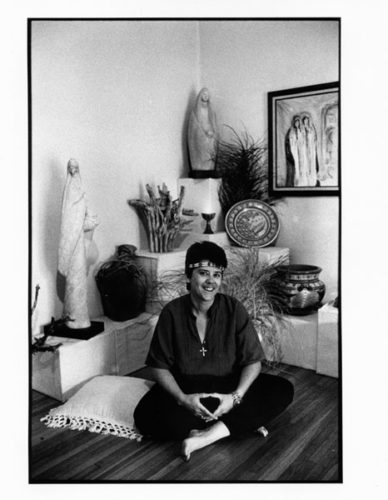
Young Jeanne Cordova (courtesy of Jeanne Cordova’s estate)
Beyond the convent
After leaving the convent, Cordova went on to earn bachelor’s and master’s degrees in social work from the University of California at Los Angeles (UCLA.). By age 22 she had completed a master of social work degree with a thesis on community organizing in the lesbian community. She also embraced her Latina heritage, serving as vice president of UCLA’s Chicano Students Alliance.
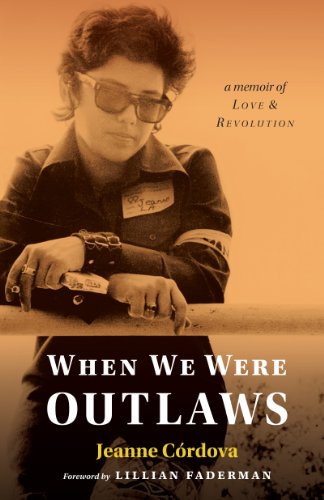 Cordova’s accomplishments as a community organizer are well documented in many places, including her 2011 autobiography “When We Were Outlaws: A Memoir of Love and Revolution.” The title refers to how lesbian and gay people were criminalized by sodomy laws that Cordova helped abolish.
Cordova’s accomplishments as a community organizer are well documented in many places, including her 2011 autobiography “When We Were Outlaws: A Memoir of Love and Revolution.” The title refers to how lesbian and gay people were criminalized by sodomy laws that Cordova helped abolish.
Her protests helped decriminalize homosexuality and protect the jobs of openly lesbian and gay teachers. She founded the “Lesbian Tide” newsmagazine in 1971 and the “Gay and Lesbian Community Yellow Pages” in 1981. A self-described “butch,” she fought for lesbian visibility in the LGBTQ and feminist movements.
She maintained some alliances with radical Christian activists such as Troy Perry, founder of the LGBTQ-affirming Metropolitan Community Churches. In a lively YouTube video interview for the forthcoming documentary “L.A.: A Queer History,” Cordova and Perry talk about their protest against California’s sodomy law. They were among three same-sex couples who went to the Los Angeles police and confessed to sodomy, hoping that their arrests would draw attention to the legalized discrimination. The law was repealed two months later in 1976.
“Lesbian Nuns: Breaking Silence” was published in 1985 with real-life accounts by 50 women, including co-editors Nancy Manahan and Rosemary Keefer Curb. They selected the stories from 400 submissions. The first chapter, written by Cordova, is titled “My Immaculate Heart.”
The book was widely praised for bringing visibility to lesbian nuns, but publisher Naiad Press was criticized for allowing excerpts about nuns’ sexuality to be published in Penthouse Forum, a subsidiary of a pornographic magazine for heterosexual men.
As the foreword to the 2013 reprint edition notes, the book “played a significant role in the mainstreaming of lesbian print culture.” The editors “wanted to shatter the silence that denied the existence of lesbians in religious life and to make it clear that ‘lesbians are everywhere.’”
In 1990 Cordova went on to expand her chapter into the full-length book “Kicking the Habit: A Lesbian Nun Story.” It was endorsed by such lesbian luminaries as Kate Millett and Robin Tyler, who called it, “a Rubyfruit Jungle of the convent!”
Cordova and her spouse, Lynn Harris Ballen, had a commitment ceremony in 1995 and were legally wed in 2013, after same-sex marriage was legalized in California.
Cordova responded with extraordinary foresight and courage when she learned that she was dying of cancer. With death approaching, she donated $2 million to the Astraea Lesbian Foundation for Justice. She wrote an open “Letter About Dying, to My LGBT Communities.” It is lovingly preserved at her official website, along with much more writing by and about her.
In the open letter she proclaimed: “It is wonderful to have had a life’s cause: freedom and dignity for lesbians.”
Cordova died on Jan. 10, 2016. Tributes include the Jeanne Cordova Prize for Lesbian Nonfiction, which was established in her memory at Lambda Literary Foundation. Her life is celebrated in this poem by her friend, Los Angeles poet Audrey Lockwood.
Things I Learned from Jeanne
By Audrey Lockwood
Wear your heart on your sleeve,
Delight in roses
Have the biggest heart the grandest smile
Courage, show courage up till the very
Last moment
Clothing, wildly celebrate butch style
Step it up woman, it’s about the details,
Cuff links, red piping, pocket watch
Be a woman of the people, Amazon Greatness
Visions, it is about them, making them happen
In the end gracious, it is about the last rose you can give
to a woman, yes, you know it and she knows it.
Kiss her cheek, tell her you love her, give her
the rose, and don’t look back.
Links related to Jeanne Cordova
Jeannecordova.com official website has been archived
___
To read this article in Italian, go to:
Le due vite di Jeanne Cordova. Da suora ad attivista lesbica (gionata.org)
Books about lesbian nuns
“Nun Better: An Amazing Love Story” by Joanie Lindenmeyer and Carol Tierheimer.
Two Catholic nuns reveal their passionate 40-year love story in a heartfelt memoir that begins decades before same-sex marriage was legalized. Eventually the women left the convent and created loving lesbian and gay communities. They were officially wed by an Episcopal priest in 2020. Then a medical tragedy led them to live out their wedding vow of “in sickness and in health.” The authors both taught and ministered as nuns in the Sisters of St. Joseph of Carondelet. Published by Two Sisters Writing and Publishing, 2023.
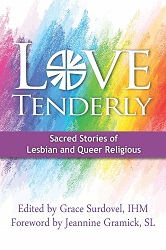
“Love Tenderly: Sacred Stories of Lesbian and Queer Religious” by Grace Surdovel (editor).
Lesbian and queer nuns tell how they integrate their sexual orientation with their commitment to religious life in this revealing anthology. The 23 writers are a cross-section of Catholic sisters, varying in ages, communities, ministries, and stages of self-acceptance. Editor Grace Surdovel is an Immaculate Heart of Mary sister and graduate faculty in the school of education at Wilkes University in Pennsylvania. Foreword by Jeannine Gramick, co-founder of New Ways Ministry. Published by New Ways Ministry, a provider of LGBTQ Catholic resources for 40-plus years, in 2021.

“The Courage to Love and Serve: The Life Story of Rev. Judith A. Beaumont: A Roman Catholic Woman Priest And A Saint for Our Times” by Judith A. B. Lee.
A nun’s life of prophetic obedience — and disobedience — is revealed in a biography by the woman priest who was her longtime partner in life and ministry. Judith Beaumont (1937-2018) was a Benedictine sister for 34 years and a Roman Catholic Woman Priest ordained in 2012. Her commitment to serving God and humanity led her on a surprising path from teaching in Chicago’s parochial schools to being imprisoned for protesting nuclear war in a Plowshares action. Together she and her partner created justice in many ways, including prison reform, women’s shelters and homeless ministry. Beaumont even faced terminal cancer with faithful courage. The book is loaded with original source material, using Beaumont’s own words wherever possible. The author is a Roman Catholic Woman Priest, pastor of an Inclusive Catholic Community in Florida; and professor emerita of social work at the University of Connecticut. Published by Outskirts Press, 2020.
“Kicking the Habit: A Lesbian Nun Story” by Jeanne Cordova
“Lesbian Nuns: Breaking Silence” by Nancy Manahan and Rosemary Keefer Curb (editors)
“Once Upon a Convent: A Memoir of a Lesbian Nun” by Orice Klaas, 2015
Lesbian nuns from history
“Immodest Acts: The Life of a Lesbian Nun in Renaissance Italy” by Judith C. Brown
“Lieutenant Nun: Memoir of a Basque Transvestite in the New World” by Catalina De Erauso
Q Spirit’s LGBTQ Saints series includes the following lesbian nuns:
Brigid and Darlughdach: Celtic saint loved her female soulmate
Hildegard of Bingen and Richardis: Medieval mystic and the woman she loved
Sor Juana Inés de la Cruz: Nun who loved a countess in 17th-century Mexico City
Walatta Petros: African nun shared a lifetime bond with a female partner in 17th-century
Coming to Q Spirit in the future:
Marie Louise Habets (religious name Sister Xaverine) (Jan. 14, 1905 – May 27, 1986) was a Belgian nurse and ex-nun whose life was fictionalized in the 1956 bestseller “The Nun’s Story” by American author Kathryn Hulme. Audrey Hepburn was nominated for an Academy Award for starring in the heterosexualized 1959 film adaptation. After Habets left the convent, she and Hulme shared a home for almost 40 years.
Remembering Jeanne Deckers, Lesbian Catholic Who Won Fame as “The Singing Nun” (New Ways Ministry)
___
Top image credit: Jeanne Cordova in 2012 (Wikimedia Commons)
___
This post is part of the LGBTQ Saints series by Kittredge Cherry. Traditional and alternative saints, people in the Bible, LGBTQ martyrs, authors, theologians, religious leaders, artists, deities and other figures of special interest to lesbian, gay, bisexual and transgender and queer (LGBTQ) people and our allies are covered.
This article was originally published on Q Spirit in January 2017, expanded with new material over time, and most recently updated on January 9, 2025.
Copyright © Kittredge Cherry. All rights reserved.
Qspirit.net presents the Jesus in Love Blog on LGBTQ spirituality.

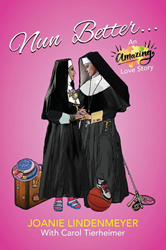
















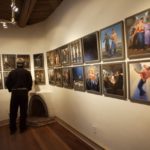


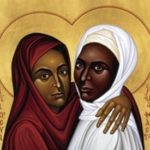
Jeanne was a butch pal, and we shared cigars— I recall one time we went to a lesbian fundraiser for something or other… the two of us were waiting at valet parking to have our cars delivered— and the guy at the car stand addressed both of us as “Sir”— we just smiled at each other— it seemed that we often connected waiting outside— I think sometimes we just had to escape for a chat…. she would chomp on a licorice stick when she gave up smoking. I think Jeanne was my favorite Los Angeles lesbian, and we both loved our tailored suits. I will always miss her, and in one of those coincidences of life, I had reviewed an anthology she was in “Lesbian Nuns” when it first came out. Little did I realize that one day I’d be hanging with her at the car park LOL. I still cherish the review copy.
I remember reading Lesbian Nuns when I first started seminary in 1987. It was a time of new worlds opening up: reading Boswell’s book, discovering Aelred of Rievaulx, reading Lesbian Nuns, which connected with historical reading, discovering Carter Heyward. I had been out for 15 years and “knew the literature.” But this was discovering a whole new library. Besides, two of my classmates were a lesbian couple, both former nuns. They had so many other stories.
Thank you for your thoughtful comment about what a revelation it was to read “Lesbian Nuns” in 1987. I experienced that sensation at the time too. I’m glad that we both lived long enough to discuss it more than 30 years later.
One of the first books I reviewed when I started reviewing for Amazon is this one:
https://www.amazon.com/Unquenchable-Thirst-Memoir-Mary-Johnson/dp/0385527470/ref=cm_cr_srp_d_product_top?ie=UTF8.
I couldn’t locate my review on the book’s product page, so I reposted it. Here is the link to that review:
https://www.amazon.com/gp/customer-reviews/R3F8C58LSYHCG1?ref=pf_ov_at_pdctrvw_srp
Thanks for the links to “Unquenchable Thirst” by Mary Johnson, another intelligent nun whose calling eventually led her outside the religious order.
I’m 78 yrs. old and I just lost my partner in life. We were both former religious nuns. We lived together for 42 years. I missed her so much .
I’m so sorry for your loss. It’s beautiful that you found another former nun and lived together for more than four decades. Surely God blessed your relationship and her soul watches over you now.